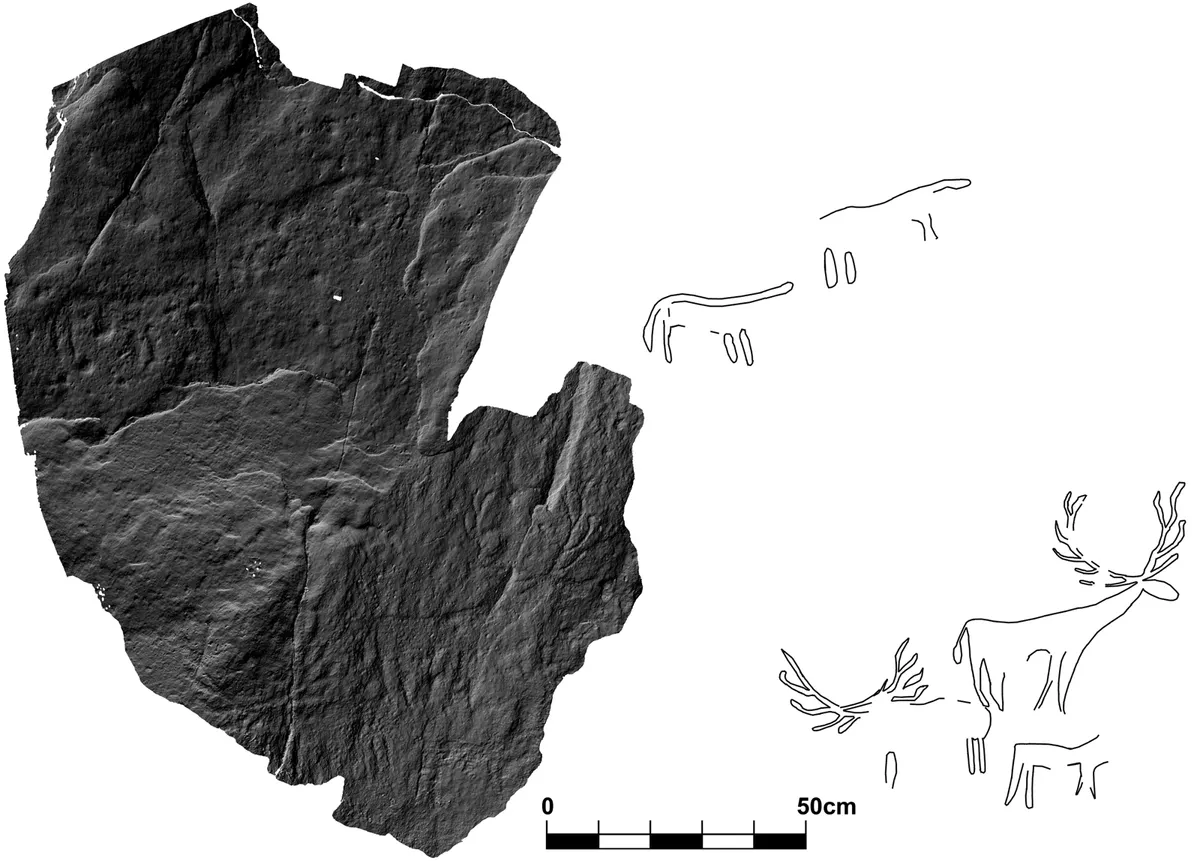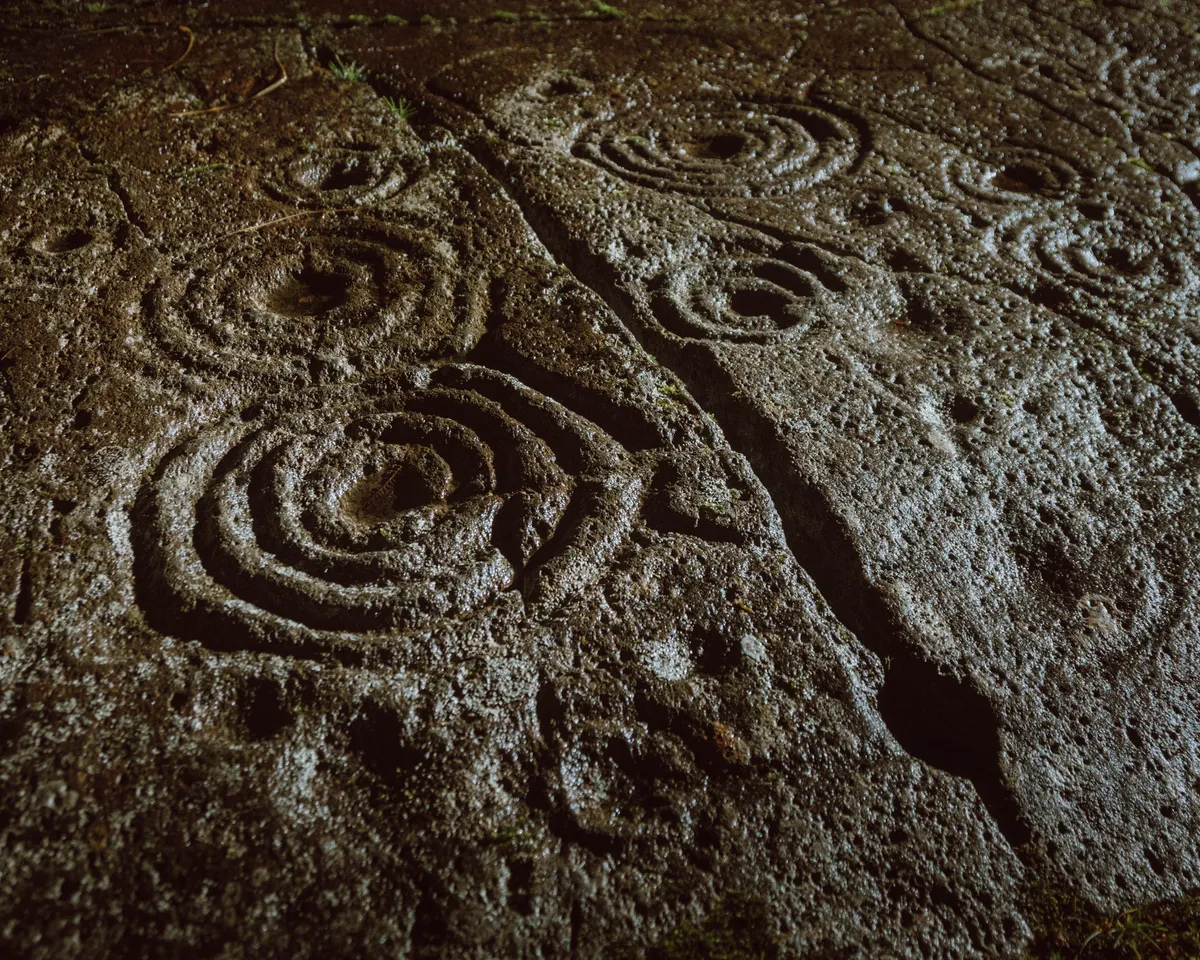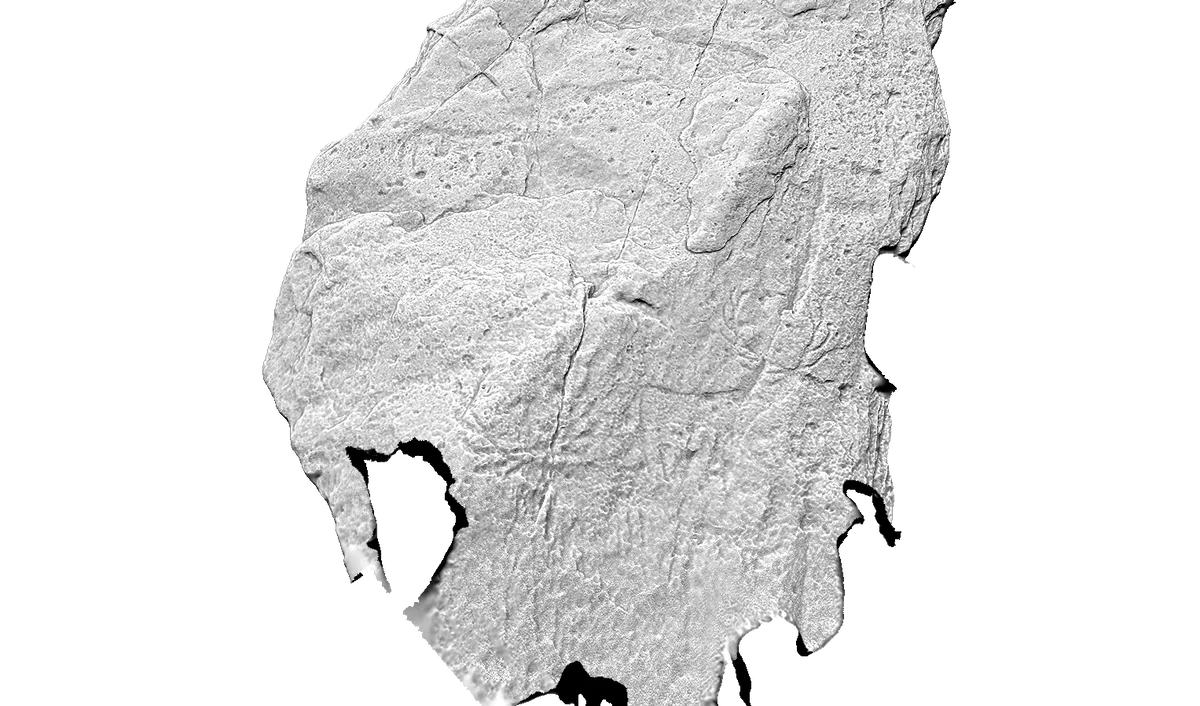The detailed carvings are estimated to be between 4,000 and 5,000 years old, putting them at the time of the Neolithic or Early Bronze Age.
The prehistoric art was found on a capstone of a burial chamber (known as a cist) inside Dunchraigaig Cairn in Kilmartin Glen by Hamish Fenton, who discovered them by chance while visiting the area.

“I was passing Dunchraigaig Cairn at dusk when I noticed the burial chamber in the side of the cairn and decided to slide inside with my torch,” he described.
“As I shone the torch around, I noticed a pattern on the underside of the roof slab which didn’t appear to be natural markings in the rock. As I shone the light around further, I could see that I was looking at a deer stag upside down, and as I continued looking around, more animals appeared on the rock.
“This was a completely amazing and unexpected find and, to me, discoveries like this are the real treasure of archaeology, helping to reshape our understanding of the past.”
Kilmartin Glen is an important site for Neolithic and Bronze Age remains in mainland Scotland, containing cairns, standing stones and stone circles as well as carved rock — although none of the previously found carvings show figurative artwork.
The other carvings feature so-called ‘cup and ring’ marks, which were created by striking the rock surface with a stone tool to make central cup marks surrounded by concentric circles.

Very little is known about why these patterns were made, what they represent, and what they may have been used for, but they exist in their thousands: of the more than 3,000 prehistoric carved rocks in Scotland, the vast majority feature these mysterious cup and ring marks.
This makes the discovery of ancient animal carvings all the more significant.
Prior to the discovery of the deer carvings at Kilmartin Glen, it was an accepted assumption that prehistoric rock art on the British Isles was non-figurative.
“It was previously thought that prehistoric animal carvings of this date didn’t exist in Scotland, although they are known in parts of Europe, so it is very exciting that they have now been discovered here for the first time in the historic Kilmartin Glen,” explained Dr. Tertia Barnett, Principal Investigator for Scotland’s Rock Art Project at Historic Environment Scotland.
The recently discovered animal carvings include depictions of two stags with full-grown antlers. Three other animals are visible, and although they are harder to discern they are thought to be depictions of juvenile deer.

To people living in the Neolithic and Early Bronze Age, deer would have been hugely important. Regularly hunted, every part of this animal would have been useful: meat for food, hides for clothing, and bones and antlers for tools.
Rather than simply being perceived in a practical sense for material use, due to their importance to the lives and even survival of Neolithic and Bronze Age people, it is likely that deer held some sacred value, and its place on the capstone of a burial chamber at Dunchraigaig Cairn suggests it symbolised something of great importance to its creators.
Dunchraigaig Cairn is currently closed to the public while Historic Environment Scotland investigates the markings further, but the capstone can be viewed as a 3D model, where the markings can be explored in detail.